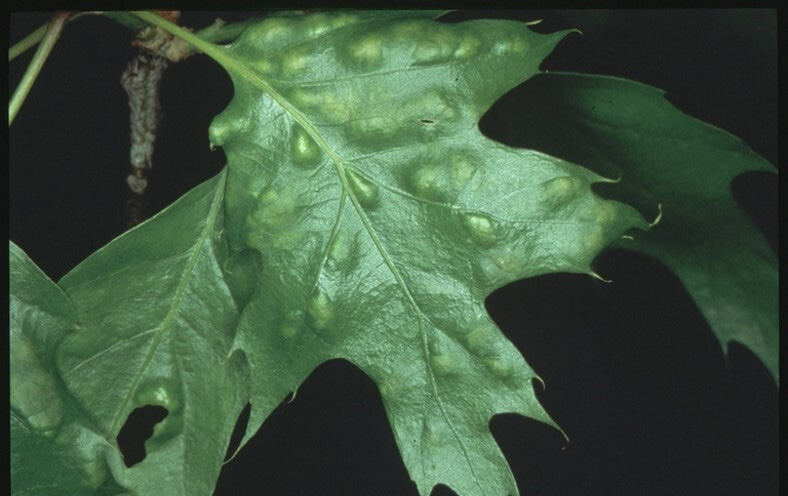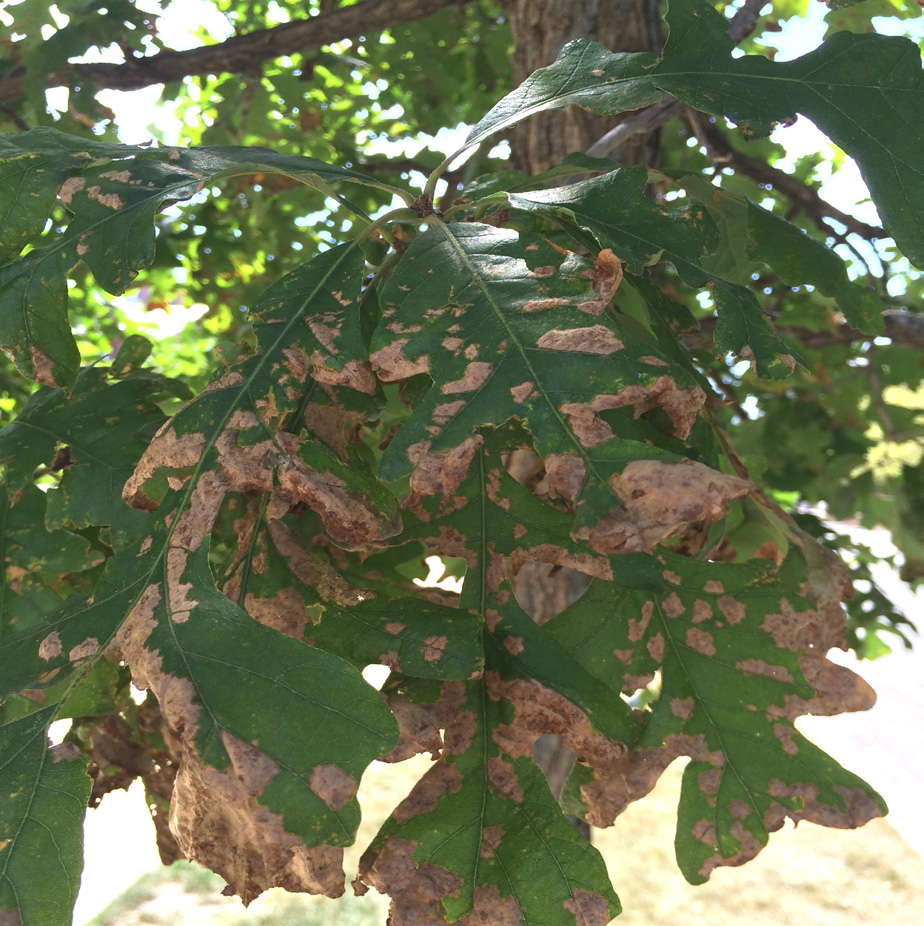Oak Leaf Blister (Scientific Name of Pathogen: Taphrina caerulescens - Fungus)
Hosts:

Figure 1. Young blisters appear on leaves after infection. Photo by Penn State Department of Plant Pathology & Environmental Microbiology Archives, Bugwood.org.
Oak trees (Quercus spp.)
Damage/symptoms:
Symptoms appear early in the summer as blisters, bulges or depressions on the upper leaf surface (Fig. 1). The lower side of the leaves turns a grayish color in affected areas. The blistered areas may merge and change color from yellow (Fig. 2) to brown over time (Fig. 3). Infection may also result in leaf distortion. Mature leaves are usually resistant to infection.
Disease cycle:
The fungus overwinters in infected buds, bud scales, and leaf debris.

Figure 2. Large areas on leaves affected by oak leaf blister disease. Photo by Michael Kangas, NDSU - North Dakota Forest Service, Bugwood.org.
Spores are dispersed in spring and infect newly emerging leaves just after bud break. Infection is most severe under cool, wet conditions. Blisters form on the leaves and produce new spores by midsummer.
Management:
This disease may be unsightly, but it typically does not cause severe damage. Remove infected leaves that fall onto the ground to reduce the level of infection. Avoid wetting the foliage for prolonged times. Fungicides are not usually recommended unless the disease is a continuing problem. High value trees can be treated with a single

Figure 3. Browning of blisters on upper surface of an oak leaf. Photo by N. Brazee, University of Massachusetts Amherst.
fungicide application in early spring when the buds start to swell. Products with the active ingredient chlorothalonil are effective in controlling this disease. Strictly follow instructions on the pesticide labels.
By Eva Grimme, MSU Associate Extension Specialist III. February 2024. For more information, contact diagnostics@montana.edu.
This February 2024 fact sheet is also available as a printable PDF (636KB).
Disclaimer: These recommendations are provided only as a guide. It is always the pesticide applicator’s responsibility, by law, to read and follow all current label directions for the specific pesticide being used. The authors and Montana State University assume no liability resulting from the use of these recommendations. The Montana State University Extension Service is an ADA/EO/AA/Veteran’s Preference Employer and Provider of Educational Outreach.
